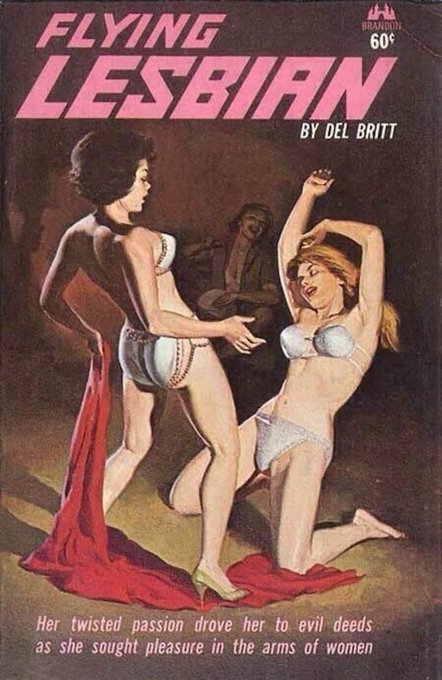And so we bid a fond farewell to Starblazer: the sci-fi graphic novel franchise from the makers of Commando and The People's Friend. I hope some day we get a compendium edition because a lot of it was solid stuff.
As obscenity laws were relaxed in the 1960s the lesbian pulp market began to decline. More serious and realistic lesbian stories began to be published, and the pulps were reduced to voyeurism and gimmicks to sell copies.
A lot of lesbian pulp is based on stereotype: furtive seduction, older controlling lesbians seducing young innocents, men fighting butch women for the love of a confused wife, small-town girls falling for big city vices etc.
Nakahara's 1950s Shōjo work shows young women as modern, confrontational and self-aware. Compared to the demure and modest poses of his 1930s illustrations the difference is very striking.
In 1946 Jun'ichi Nakahara worked on his own magazines: Soreiyu ("Soleil") and Himawari ("Sunflower"). After a study trip to Paris he also launched "Junior Soleil" in 1954.
King Stork, by Howard Pyle. Little Brown & Co , 1973. Illustrations by Trina Schart Hyman.
The Serpent Slayer, and other stories of strong women by Katrin Tchana. Little, 2000. Illustrations by Trina Schart Hyman.
Tight Times, by Barbara Shook Hazen. Puffin Picture Books, 1983. Illustrations by Trina Schart Hyman.
Jane, Wishing by Tobi Tobias. Viking Press, 1977. Illustrations by Trina Schart Hyman.
St. George and the Dragon, by Margaret Hodgen. Caldecott Medal, 1985. Illustrations by Trina Schart Hyman.





























